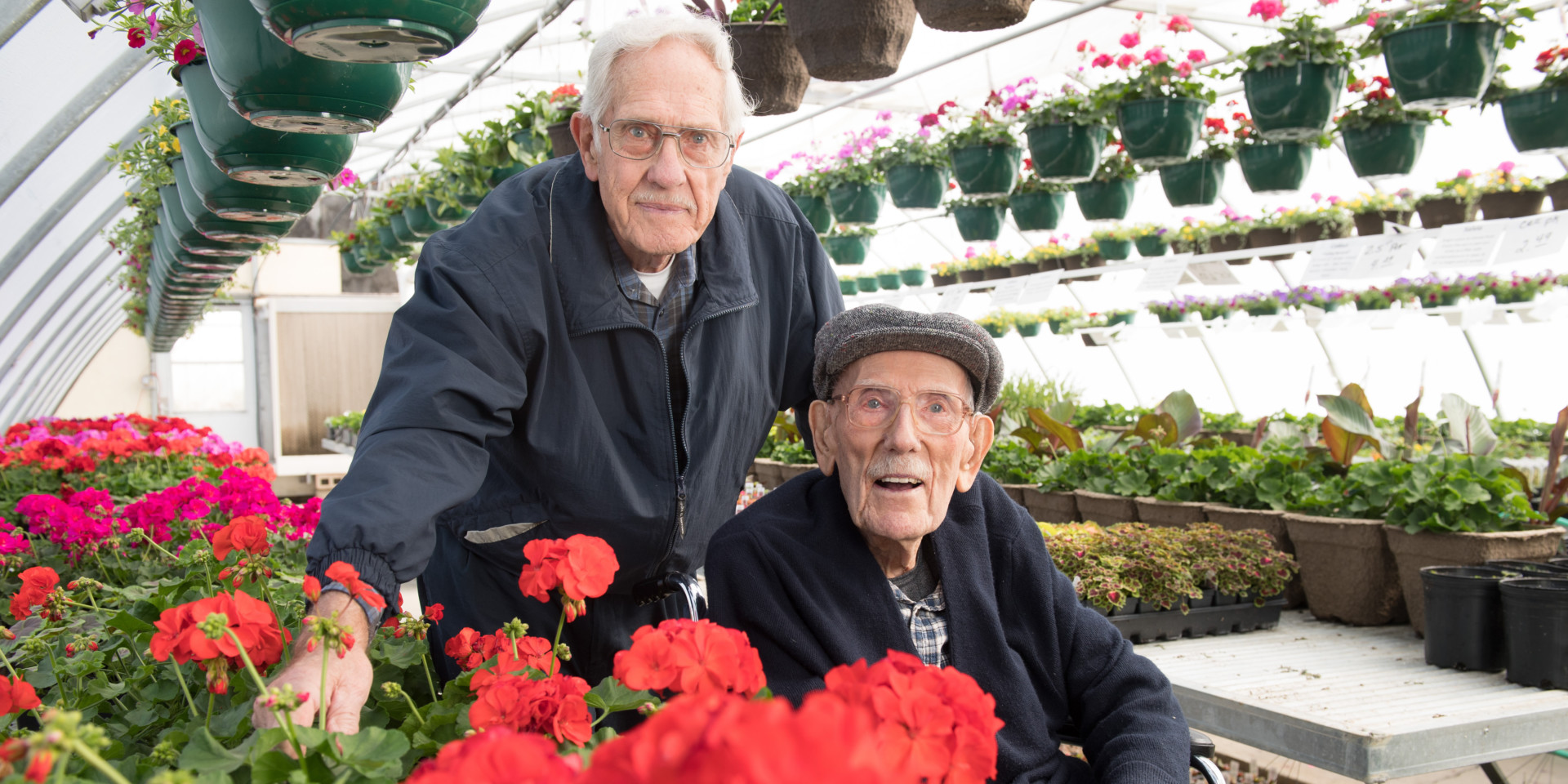
Just two weeks before he died, Carl Jorgensen visited a Fort Collins greenhouse to see a friend of 70 years.
Jorgensen was 104 years old. Yet he instantly spotted the familiar geranium, with its bright, orangey-red blossoms.
Retired horticulture Professor Carl Jorgensen died on May 3, 2018. Services are scheduled at 2 p.m. Friday, May 18, at St. John’s Lutheran Church in Fort Collins. Full obituary
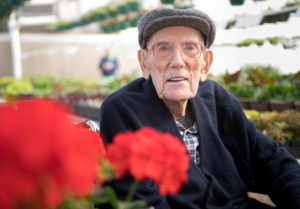
“It’s fire-engine red,” Jorgensen declared with a wide smile, rolling by wheelchair to a bench of blooming geraniums. “We called this fire-engine red.”
The plant he admired is the Colorado Aggie Geranium. Developed in greenhouses at the former Colorado Agricultural and Mechanical College – Colorado State University’s earlier designation – the variety was well-known among plant specialists on campus in the 1940s.
The Aggie Geranium
In 1947, Jorgensen began his career as a horticulture professor at Colorado A&M, and he cultivated the geranium for almost 70 years in his home gardens. As the decades ticked by, he unintentionally became its keeper: The Aggie Geranium, after being discarded from campus greenhouses, had dwindled to a single plant in a whiskey-barrel container on Jorgensen’s patio at The Winslow, a local senior living community.
But this spring, with help from CSU Professor Emeritus Ken Goldsberry, a floriculturist, the Aggie Geranium is flourishing again. A limited supply is available for sale to local gardeners at Donath Lake Greenhouses in south Fort Collins.
“They’re resurrected,” Goldsberry said, assessing geraniums at the greenhouse he began with his wife and son. “Carl propagated this plant for almost 70 cotton-pickin’ years. That’s what astounds me.”
Jorgensen’s progeny
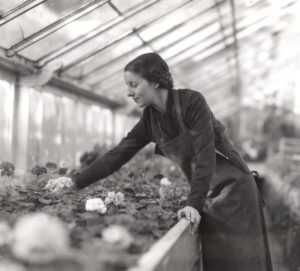
“This is his progeny, all from his one plant,” marveled Cheryl Aaland, a volunteer research assistant at the greenhouse.
Goldsberry, who designed and first directed CSU’s W.D. Holley Plant Environmental Research Center, saved the Aggie Geranium from near extinction after a chance conversation with Jorgensen, his former teacher and colleague, during the elder professor’s 99th birthday party in 2013.
At the time, Goldsberry was more than two decades into retirement, having left teaching, extension and research at CSU in 1991. But the Aggie Geranium was rooted in his memory; he wanted to find, propagate and sell the throwback variety at his family greenhouse.
Goldsberry learned a former greenhouse manager named Gus Mussenbrock had grown the Aggie Geranium at Colorado A&M, as CSU was known between 1935 and 1957. Goldsberry had first seen the vivid geranium when he arrived at CSU as a student in 1950. Jorgensen was his first horticulture professor, and after Goldsberry finished his undergraduate schooling and a stint in the Air Force, the two had adjacent offices on campus.
To Goldsberry, the Aggie Geranium symbolized the mid-century boom in the state’s floriculture industry, a period also marked by blooming Aggie enthusiasm on campus. The colors of the cultivar’s orangey-red blossoms and deep-green foliage were a nod to the former school colors of pumpkin and alfalfa.
Beyond its characteristic hues, the plant represented a time and place: an Aggie campus on the cusp of its post-World War II growth spurt, when the population of Fort Collins was one-tenth of that today, and when greenhouses filled with carnations, chrysanthemums and roses sprouted on campus and across the state.
‘Carnation Capital of the World’
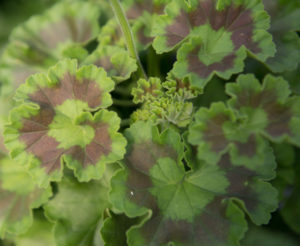
The cut-flower industry thrived in WWII-era Colorado – the state was called the “Carnation Capital of the World” – and campus experts, including Jorgensen, Goldsberry and their renowned colleague Professor W.D. “Bob” Holley, supported the industry with teaching and research.
Jorgensen, for instance, taught Introduction to Horticulture for classes of up to 500 students in the auditorium at Old Main, before the iconic college building burned down in 1970. He also served as the first arborist for the city of Fort Collins, advocating for tree care and introducing dozens of distinctive iris varieties to community gardens, according to a feature published in the Fort Collins Coloradoan in 2013. He retired from CSU in 1977.
Goldsberry, meantime, started the Colorado Bedding and Pot Plant Association, which later morphed into a broader trade organization. He developed the Colorado Majestic Mountain series of dwarf pot carnations, which included eight patented varieties. He also conducted research on important greenhouse technologies, including innovations in atmospheric fertilization with carbon-dioxide gas.
By the 1980s, the cut-flower sector consolidated in California and Colombia, where production costs were lower; Colorado’s carnation and rose greenhouses faded, and the state’s floriculture business diversified into bedding plants, pot plants, and other aspects of the green industry.
Regrowing the cultivar
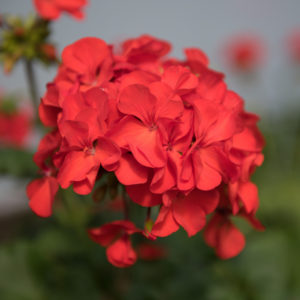
When Goldsberry and his family members started their greenhouse business in 1991, he remembered the Aggie Geranium. He asked “hundreds of people” where he could find the plant, he said. It had seemingly vanished. Then Goldsberry attended Jorgensen’s 99th birthday reception.
“I’ve looked all over for the Colorado Aggie Geranium. Do you know anyone who has it?” Goldsberry asked Jorgensen.
“I have,” Jorgensen replied. “Do you want a cutting?”
“You bet,” Goldsberry said.
From Jorgensen’s one remaining geranium, Goldsberry rooted cuttings to clone the donor plant. To enhance desirable traits, he manually cross-bred plants by meticulously transferring pollen from the anther of one flower to the stigma of another. These plant-breeding and selection steps, which spanned five years, resulted in seed to regrow the cultivar.
Delighting in the results
Jorgensen was delighted to see the results – nearly 200 Aggie Geranium plants in varying stages of maturity – on his trip to Donath Lake Greenhouses in mid-April.
“Oh, these are pretty. These are looking great, Ken. They’re so floriferous,” Jorgensen noted as the two avid plant-breeders bonded in the earthy humidity of a greenhouse. The iris was Jorgensen’s first floral love, but you wouldn’t have known that from his enthusiasm over the geranium.
“These two came out of the seed,” Goldsberry explained, lifting one pot, then another, for Jorgensen to examine. “Look at the markings on this leaf. But this one has such fine foliage, so I’m going to cross these.”
The elder horticulturalist nodded at the plan. “I’d like to see that – if I live,” he said, smiling.
Jorgensen did not survive to see the next iteration of the improved Aggie Geranium. But, like every good senior, he bequeathed his treasure to a younger schoolmate. Goldsberry, at the age of 86, is eager to see the cultivar grow and multiply.
“The Aggie Geranium is something unique and different associated with the university,” he said. “This lets us tie horticulture to the university, and it ties together Colorado A&M with CSU today.”